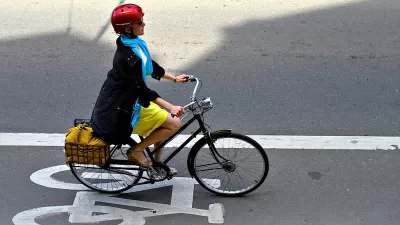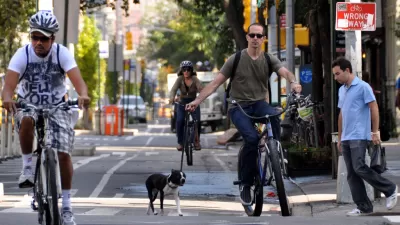Looking at public commentary following a spate of recent bicyclist accidents and incidents, Annie Siebert considers some of issues that Pittsburghers face as drivers, cyclists and pedestrians sharing the road.

The death and injury of several cyclists in Pittsburgh over the past several months have spurred an outpouring of commentary from citizens on websites, in editorial sections of newspapers and in social media. According to Siebert, "Some of [the] comments make it sound as though the world contains only two kinds of people: bicyclists and drivers." Drivers criticized cyclists for negligent activities on the road and vice versa.
Yet, as Siebert points out, "more often than not, cyclists are also drivers." Based on a survey that Bike Pittsburgh sent out to its 1,700 members, 90 percent of respondents said they own and drive vehicles. "The whole idea that it's us versus them is completely unfounded," said Scott Bricker, executive director of Bike Pittsburgh, "We're multi-modal people."
So how can the city help to encourage greater respect and understanding between these groups? Law enforcement, infrastructure enhancement, and educational programs are just some of the avenues being pursued.
Stephen Patchan, Pittsburgh's bike-pedestrian coordinator asserts "that cycling in the city is still a relatively new thing, and as more people ride bikes and bicycling becomes a mainstream transportation choice, cyclists will see less tension, frustration and anger from some motorists." He also adds, "I'm not convinced that the comments section in news outlets reflect the majority of drivers' opinions."
FULL STORY: Drivers, bicyclists and pedestrians can take the high road to safety

Maui's Vacation Rental Debate Turns Ugly
Verbal attacks, misinformation campaigns and fistfights plague a high-stakes debate to convert thousands of vacation rentals into long-term housing.

Planetizen Federal Action Tracker
A weekly monitor of how Trump’s orders and actions are impacting planners and planning in America.

In Urban Planning, AI Prompting Could be the New Design Thinking
Creativity has long been key to great urban design. What if we see AI as our new creative partner?

King County Supportive Housing Program Offers Hope for Unhoused Residents
The county is taking a ‘Housing First’ approach that prioritizes getting people into housing, then offering wraparound supportive services.

Researchers Use AI to Get Clearer Picture of US Housing
Analysts are using artificial intelligence to supercharge their research by allowing them to comb through data faster. Though these AI tools can be error prone, they save time and housing researchers are optimistic about the future.

Making Shared Micromobility More Inclusive
Cities and shared mobility system operators can do more to include people with disabilities in planning and operations, per a new report.
Urban Design for Planners 1: Software Tools
This six-course series explores essential urban design concepts using open source software and equips planners with the tools they need to participate fully in the urban design process.
Planning for Universal Design
Learn the tools for implementing Universal Design in planning regulations.
planning NEXT
Appalachian Highlands Housing Partners
Mpact (founded as Rail~Volution)
City of Camden Redevelopment Agency
City of Astoria
City of Portland
City of Laramie



























